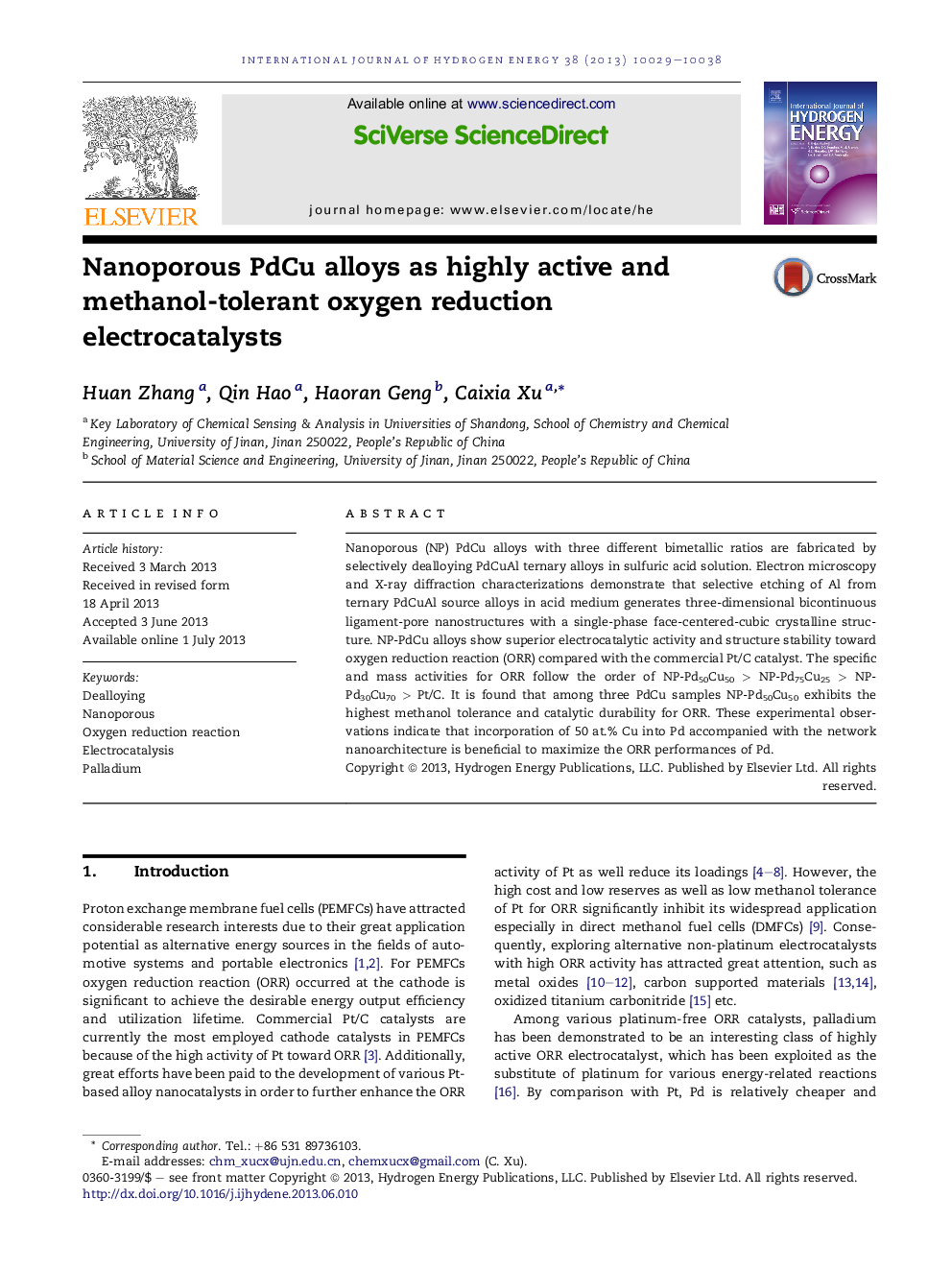| Article ID | Journal | Published Year | Pages | File Type |
|---|---|---|---|---|
| 1273416 | International Journal of Hydrogen Energy | 2013 | 10 Pages |
•Nanoporous (NP) PdCu alloys with three alloy ratios are fabricated by dealloying.•NP-PdCu alloys exhibit superior catalytic activity toward ORR than Pt/C catalyst.•NP-PdCu alloys show a higher selectivity for ORR in methanol-containing medium.•NP-PdCu alloys show higher catalytic durability for ORR compared with Pt/C.•NP-Pd50Cu50 shows the best specific and mass ORR activity among all catalysts.
Nanoporous (NP) PdCu alloys with three different bimetallic ratios are fabricated by selectively dealloying PdCuAl ternary alloys in sulfuric acid solution. Electron microscopy and X-ray diffraction characterizations demonstrate that selective etching of Al from ternary PdCuAl source alloys in acid medium generates three-dimensional bicontinuous ligament-pore nanostructures with a single-phase face-centered-cubic crystalline structure. NP-PdCu alloys show superior electrocatalytic activity and structure stability toward oxygen reduction reaction (ORR) compared with the commercial Pt/C catalyst. The specific and mass activities for ORR follow the order of NP-Pd50Cu50 > NP-Pd75Cu25 > NP-Pd30Cu70 > Pt/C. It is found that among three PdCu samples NP-Pd50Cu50 exhibits the highest methanol tolerance and catalytic durability for ORR. These experimental observations indicate that incorporation of 50 at.% Cu into Pd accompanied with the network nanoarchitecture is beneficial to maximize the ORR performances of Pd.
